Following the previous article where we saw how investing can be used to increase levels of savings in retirement, we will now focus on how invested funds can be of added benefit when it comes to drawing an income in retirement.
Income in retirement
By Jozef Spiteri
This article is published on: 21st March 2023
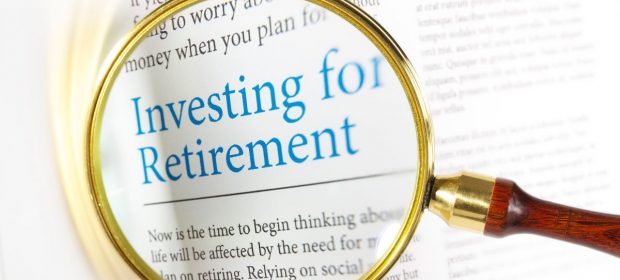
We shall be making use of the same three scenarios we saw in the last article, where John had to choose between keeping all savings in cash, investing in a balanced risk portfolio or investing in a more adventurous portfolio.
In the first scenario John was left with cash reserves of €911,186 at retirement.
In retirement John aims to maintain his lifestyle whilst also taking two big trips annually with his partner. An estimated drawdown of €50,000 per year should allow this. In this case, cash reserves would last John 18 years. Considering that people nowadays are living longer, John will have some tough decisions to make. This may involve reducing the withdrawals made each year in order to stretch the funds as much as possible. Therefore, John will find it very difficult to maintain the retirement he wanted.
Looking at scenario 2, John will have an investment pot of €1,375,757 at retirement growing at 4% per year. If he were to withdraw €50,000 a year, this would represent a 3.6% annual withdrawal. This would mean that he would be taking out most of the average growth being achieved annually, which will more or less have his portfolio increasing by 0.4% per year net of drawdown. This will mean that John will not only be able to lead the life he wishes but also have a valuable cushion to protect against unexpected expenses which could arise in future.
The potential cushion with scenario 3 could be even greater with a savings pot of € 1,845,763 at retirement and an investment growing at an average 6% per year. John will be making an annual withdrawal of 2.7% of his portfolio leaving a net growth of 3.3% per year after drawdown. It’s often the case however that a more ‘balanced’ risk approach is taken in retirement.
This example illustrates the power of investment not only before, but during, retirement – compound returns within a properly planned investment strategy will often contribute towards achieving a secure and comfortable retirement.
The above are simplified examples and for illustrative purposes only. For a more detailed outline of how we implement successful investment strategies, please contact us to arrange an introductory discussion.
Saving for retirement in Spain
By Chris Burke
This article is published on: 8th February 2023
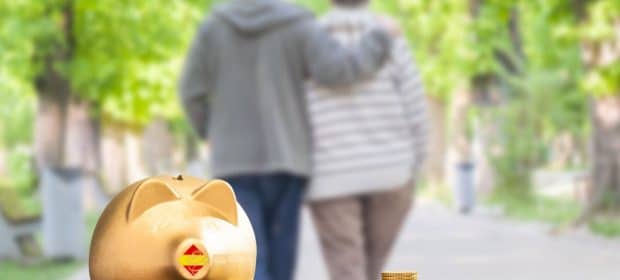
Retirement options
One of the big differences when you move to Spain are the options available to you for retirement planning. In the UK/Ireland we have ISAs and private/employer pension schemes which both offer good tax savings.
ISAs are not tax free in Spain, and the annual ‘private pension allowance’ is only €1,500 per year per person! In some employer contribution schemes you can save up to €10,000 per year, but these are very uncommon. Compare that to £40,000 per year in the UK, or in Ireland up to €115,000 per person, per year! €1,500 per year is never going to achieve any serious amount of income for retirement.
The main reason for this is that in Spain, culturally people preferred to set up a company structure or accrue properties, passing these from generation to generation. Additionally, there is a lack of incentives from the authorities to entice people to save into retirement schemes.
Pensions have been popular for retirement in the UK/Ireland because of the tax savings and potential employer contributions. Take both of those away and they are not nearly as effective, which is what happens when you move to Spain. So, what can you do if you want to plan for retirement in a tax efficient manner?

For me, retirement is not just about a pension, it’s about a retirement plan. We help clients build that retirement strategy, taking into consideration the amount of income they want, making sure their assets are highly tax efficient (such as moving them away from future income tax positions) and then making sure everything is flexible and portable, because you never know what will happen in life. This is all done by using our client planning portal, where we work together to bring this to life using the following process:
This is all done by planning, where we work together to bring this to life using the following process:
- Assess existing assets including ISAs, pensions and other savings/investments
- Understand your objectives and when/where you are looking to retire and with how much
- Understand your current and ongoing financial situation, taking into account future events such as children/grandparents
- Compile this into a strategy where we plan, implement and review
- Review and adapt as the years go by evolving the plan to fit your life
We never know exactly what’s going to happen, but one thing is for sure, with proper informed planning and regular analysis, you will be much better prepared.
The Spanish State Pension
By John Hayward
This article is published on: 21st November 2022

How many years must one work in Spain to claim a Spanish State Pension?
When Brexit finally happened, one of the concerns that I had was regarding the bilateral agreement between the UK and Spain. I wanted clarification on whether years worked in the UK would continue to count towards the years required to qualify for the Spanish State Pension. The minimum number of years in the UK is 10 years but in Spain it is 15 years. Under the Trade and Cooperation Agreement made between the EU and the UK on 24th December 2020, and specifically the Article SSC.7: Aggregation of periods, it states that the periods of employment must be considered “as though they were periods completed under the legislation which it applies”.
How does this work in practice?
If someone has worked for 9 years in the UK and 14 years in Spain then, under the individual countries’ rules, neither minimum has been achieved. However, both countries’ rules are satisfied when adding the 9 to the 14 and vice versa. That is not to say that one would receive 23 years’ pension from either or both countries but merely that the person qualifies for a pension in both countries; 9 years’ pension in the UK and 14 in Spain. Details of how the pension is calculated can be found in my colleague Chris Burke’s article Claiming your UK State Pension whilst living in Spain/EEA.

Can you continue working in Spain whilst claiming a Spanish State Pension?
In the UK, you can receive your State Pension and continue to work. You will then only pay Class 4 National Insurance contributions, those associated with profit, as no further pension benefit will be accumulated. In Spain, you cannot claim your full State Pension entitlement if you continue working, and you do not employ anyone. However, it is possible to continue working beyond Spanish State Pension age and claim a reduced pension subject to certain conditions, one of these being that you must have achieved the minimum number of years to claim 100% of the Spanish State pension. This is currently 35 years but will be increasing over the next few years. You can once again apply the principle as discussed above in terms of adding the years in the UK to achieve this minimum.
To find out what your options are and how we can help you with your retirement planning, please contact me at john.hayward@spectrum-ifa.com or call/WhatsApp me on (0034) 618 204 731.
The importance of retirement planning
By Jozef Spiteri
This article is published on: 1st March 2022
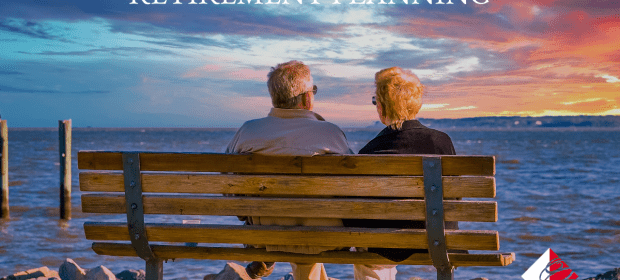
We are living in a world characterised by innovation in all fields, especially in medicine and healthcare. This vast improvement, the fruit of research and technological development which is ongoing, has contributed to a substantial increase in our life expectancy.
Since people are living longer, it is vital that the funds they build up throughout their working lives will be sufficient for them to live comfortably long into retirement.
Life expectancy for women currently stands between 80 and 83 years, whilst that for men is between 75 and 78 years, far greater than even 10 to 20 years ago, and this will continue to increase as developments in the medical sector continue. With the current retirement age standing at 65, this means that individuals must have enough savings to last for 10 to 15 years, and most likely these funds have to last even longer.
Another point to take into consideration is the lifestyle one wishes to lead when retiring and the other costs which come along with old age, such as medical and care costs. Taking these points into consideration, you may be wondering about the the best course of action to create enough wealth to cover your needs and desires in retirement.
The best way to start is to ensure that you do not keep funds in a bank account . Whilst having a cash reserve set aside is important for any emergencies which could arise, having excess funds sitting idle is a killer to the real value of that money (as in our previous article about protecting your wealth). As inflation continues to increase, the value of money earning low interest rates in savings accounts is declining, and this is why something should be done to counteract this issue.

One possible solution is investing these funds in a diversified portfolio of assets which, in the long run, will produce a return higher than inflation rates (read our article on investment performance here). This will not only protect your hard-earned cash, but it will add value to it, with the aim of providing financial security later in life and to allow, if you’re so inclined, numerous holidays around the world (or to other planets, who knows) after you retire.
Our advisers will be able to give you personalised, informed advice, to find the best possible solution for your circumstances. The service will be ongoing and adjustments can be made as your situation changes. This is something we are proud of, making sure that we are there for all our clients throughout their investment journey. All initial consultations are free of charge and carry no obligation to proceed.
Assurance Vie, an Alternative Way to Save For Your Retirement
By Michael Doyle
This article is published on: 15th March 2021
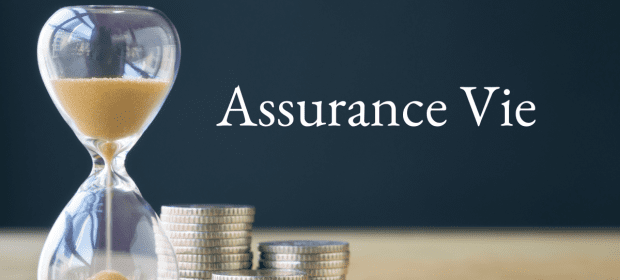
Many people are looking for an alternative to setting up a regulated pension for their retirement savings. Whilst there is tax relief on pension contributions in the savings phase, they are happy to give this up for more flexible and tax-effective income during retirement. In France, the most popular vehicle used for long-term savings is a contrat d’assurance vie, in which investors have the opportunity to invest regular premium savings or a temporary amount.
What Is an Assurance Vie?
An assurance vie is an insurance-based investment that can be as straightforward or as nuanced as you like. The following are the benefits of assurance vie for French residents:
- While the funds remain within the assurance vie, there is usually no tax on any income or gains (i.e., the tax is deferred). However, social contributions are now withheld on an annual basis (rather than when the funds are withdrawn) for sums invested in a fonds en euros portfolio, just as they are for French bank deposits
- A portion of any withdrawal is regarded as a capital withdrawal and is tax-free
- An assurance vie becomes more tax-effective over time, and after eight years, the income can be offset against a tax-free allowance of (currently) € 9,200 per year for a couple submitting a joint tax return or €4,600 for an individual
- You have total control of your money and may obtain monthly income payments from the insurance provider. However, withdrawals in the policy’s early years you can incur penalties, depending on the contract you select
- If your circumstances or attitude toward investment risk changes, you might be able to change the funds in which you invest
- For inheritance purposes, assurance vie is extremely tax-efficient
Assurance vie is the traditional form of saving for millions of French citizens. Several billions of euros are invested by French banks and insurance firms that sell their own branded products.
Additionally, a much smaller group of non-French companies have designed French-compliant policies for the expatriate market in France. These businesses are generally located in heavily regulated financial hubs like Dublin and Luxembourg.
However, before selecting such a firm, make sure that it is a product completely compatible with French law to get the same tax and inheritance benefits as the French equivalent product.
Below are some of the benefits of a foreign assurance vie policy over a French assurance vie policy:
- Other currencies, such as sterling, US dollars, and Swiss Francs, may be used to save
- There is a wider variety of investment options available, including access to top investment management firms and capital-guaranteed products and funds
- The report is written in English, making it easier for you to comprehend the terms and conditions of the assurance vie program
- The assurance vie policy is generally portable, which is beneficial when travelling within the EU (or many other countries in the world)
When it comes to EU countries, the taxes can be confusing. In these jurisdictions, the plan is often accepted for its beneficial tax performance.
How Does Assurance Vie Work?
Your one-time or regular investment or premiums are paid to an insurance firm, which then invests the funds with the investment managers of your choosing. These are typically unit-linked investments, such as equity or bond funds, but they may also be deposits or unique products sold by different financial institutions.
You may invest in a range of funds which the insurance provider can pool together to create a mutual bond, which is your assurance vie policy. The value of the units you keep in managed funds is likely to increase over time if you have selected your investment wisely.
As a consequence, the value of your assurance vie policy will grow accordingly. You must, however, be fully conscious of and comfortable with the level of risk you are taking. As with any unit-linked investment, your fund’s value will go up or down depending on what is happening in the investment markets. Short-term market instability, on the other hand, typically has a lower impact over time
How Do I Choose What to Invest Inside My Assurance Vie?
You may hold strong opinions on the subject or have no opinions at all. In any case, having an excellent financial planner on hand is helpful. His or her job is to help you comprehend the full definition of investment and decide your attitude toward investment risk.
Without acknowledging any risk, there is little reasonable chance of making a significant return on your savings. Even leaving your savings in a bank these days carries the risk of not receiving a ‘real’ rate of return, i.e., one that keeps up with inflation.
An adviser can show you various types of investment options, clarify how they operate, their track record, and the nature and level of risk that the investment entails. Although you make the ultimate decision, his or her support may be helpful.
Following the initial investment, there should be regular follow-up meetings to assess your investment’s success and make any appropriate adjustments. This may be because your circumstances have changed or because certain funds aren’t performing as well as anticipated, and you’d like to replace them with funds that are.
Can Capital Be Guaranteed Via a French Assurance Vie?
The willingness to invest in a fonds en euros is a common feature of the French assurance vie (though this is also available, in limited circumstances, from insurance companies outside France).
Since your money, as well as any interest and year-end bonus applied to it, is guaranteed, this unique type of fund is structured to shape a very conservative base for your overall investment.
The majority of foreign companies that supply these forms of funds also provide sterling and US dollar equivalents. Intending to increase returns, the funds invest mainly in government and corporate bonds, with some exposure to equities and assets (real estate). Your money will earn interest over the year.
The insurance firm is allowed by statute to refund the bulk of the funds to your account in the form of a year-end bonus. The remaining portion of the fund’s return is kept in the insurance company’s reserves to smooth out potential investment gains, such as in periods of weak market results. However, the rate of return on the fonds en euros is ordinarily low due to the quality of the guarantees. Still, it is generally better than the interest received on a bank deposit account with immediate access.
However, the French tax authorities consider this form of a fund to be so without risk that annual social charges are imposed on the gain, potentially lowering the return rate over time.
It is also possible to invest in structured bank deposit offerings through some foreign assurance vie policies. The investment return is related to the stock market, but the capital invested is guaranteed.
How Is an Assurance Vie Taxed?
Only the benefits portion of every amount you withdraw is taxable, and after January 1, 2018, the tax treatment differs depending on whether premiums were charged before September 27, 2017, or after that date.
Premiums paid before September 27, 2017
You may either be taxed at the set prelevement rate or file an annual income tax return, depending on your tax situation. The following is how the prelevement scale works:
- Withdrawals made within the first four years are taxed at a rate of 35 percent
- Withdrawals made between years four and eight are taxed at a rate of 15 percent
- After eight years, withdrawals are taxed at a rate of 7.5 percent
Furthermore, social charges are imposed on the benefits portion of the amount withdrawn, at a rate of 17.2 percent. People prefer the progressive rate tax if it is lower than their marginal rate of income tax.
In France, the highest income tax rate is officially 45 percent. As a result, even though 35 percent appears to be a high rate, it is still the best choice for higher-rate taxpayers. After four years, you’ll have to reconsider which form to use. If your marginal tax rate is at least 30 percent, a prevelement rate of 15 percent is a better choice.
If you are a non-taxpayer (as more people are now since the 5.5 percent tax bracket was eliminated), you can opt to report the withdrawal on your annual income tax return.
After eight years, there is an extra income tax incentive to encourage people to save more for the long term. A single taxpayer is entitled to a €4,600 income tax credit against the benefits portion of any withdrawals made during the tax year. This is raised to €9,200 for married couples who are subject to joint taxation. There will be no income tax to pay if the benefits portion of total withdrawals made during the year does not surpass the allowances.
This might not seem like much, but it’s a valuable allowance, as shown by this example of Peter and Pam’s assurance vie policy, which they began nine years ago with a €100,000 investment. They have not taken any withdrawals, and the account is now worth €160,000. They want to buy a new car and need €15,000 to help pay for it, so they withdraw this amount. They receive a tax certification from the insurance firm when they make this withdrawal, showing how much gain is included in the amount withdrawn. The guaranteed value has risen by 60%, but the taxable benefit factor is only 37.5 percent (or €5,625) in this case. Since they have a tax-free allowance of €9,200 and they are subject to joint taxes, there is no income tax to pay.
Premiums paid from September 27, 2017
The tax rate varies based on the contract’s duration, plus whether capital remaining in the contract as of December 31 of the year before the withdrawal was above a threshold sum for contracts longer than eight years. The threshold amount is €150,000 per person (across all assurance vie policies), measured by the amount of premiums invested minus any money already withdrawn, rather than the contract’s value. Couples taxed as a household cannot share each other’s threshold because the threshold is not cumulative between individuals. As a consequence, one spouse can meet the threshold while the other does not.
On January 1, 2018, France adopted a 30 percent flat tax,’ consisting of 12.8 percent income tax and 17.2 percent social charges. As a result, for contracts that are less than eight years old, a flat tax is levied on gains in withdrawals which are deducted automatically by the insurance provider. The flat tax replaces the pre-September 27, 2017 rate of 52.2 percent (35 percent tax plus 17.2 percent social charges) for contracts of up to four years and 32.2 percent (15 percent tax plus 17.2 percent social charges) for contracts of four to eight years.
After eight years, the tax rate is 7.5 percent. In addition, there is 17.2 percent social charges to pay. The tax free allowance of €4,600 for a single taxpayer or €9,200 for a couple is still in place after eight years. When filing their French tax return, taxpayers can also choose to pay tax at their marginal rate in the ordinary income tax brackets (rates varying from 0-45%) plus social charges. Any excess tax already charged would be refunded after processing the tax declaration made in the year after payment of the withdrawal since the insurance provider will have already deducted 12.8 percent or 7.5 percent.
However, taxpayers should be mindful that if ordinary band taxation is selected for assurance vie dividends, this will extend to all other sources of investment profits, such as interest and persons, as well as capital gains from the selling of shares.
Does Assurance Vie Have Other Advantages?
Without question, assurance vie is also a powerful tool for estate planning, both in reducing French inheritance taxes and giving you leverage over who inherits your properties after you die. This form of investment is considered outside of your estate for
When you set up this form of investment before you turn 70, each beneficiary is entitled to a tax-free deduction of €152,500 for money invested before you turn 70, with taxes limited to 20% for everything beyond that (although sums exceeding €700,000 per beneficiary are subject to a higher tax rate of 31.25 percent).
The inheritance benefits are limited for sums invested after the age of 70. There is a €30,500 tax-free exemption in this situation (plus the investment return on the total invested) for all of the people who profit from it. Any portion of the premium that reaches €30,500 is subject to regular French inheritance allowances, which differ based on the beneficiaries’ connections to the policyholder. Any gain in the scheme paid out as a death benefit is also subject to social taxes at the current rate of 17.2 percent.
Assurance vie can be a valuable tool for estate planning and providing a tax-efficient source of income for the policyholder over his or her lifetime.
What is the point of having money?
By Barry Davys
This article is published on: 14th June 2020

The point of having money is personal to you. Looking after your money should always start with your requirements. Your life has its own twists and turns. Your hopes and dreams are just that; YOUR hopes and dreams. How you feel about money is personal to you.
In this article I give you a framework for why you may want money. Once you have the framework, you can colour in the detail in a way that suits your requirements.
Knowing your answer to the question, ‘What’s the point of having money?’ is the starting point. Money, savings, investments, whichever you wish to call it, provides you with choice. The reason for having money is that it gives you one of three things; security, freedom or opportunity. Which choice you choose is up to you. The answer may be correct for you but different for your neighbour, even if you live next door in the same size house.
Security
Security means that you have enough money to be able to settle your debts, pay nursing fees if required, pay for medical treatment and perhaps be able to help the children to buy a house. People who want security often have a home free of mortgage; their little piece of heaven that they own.
To settle on having security means you need capital. Often people choose not to take risk with their money because they want to be certain it is there if they need it. A fall in the stockmarket will not damage the security blanket of money in the bank. Your savings are just one big emergency fund. In these times of extremely low interest rates there are only a few places to get a little investment return for this option.
More and more, I see that this form of planning is undermined by long life expectancy and inflation. Hoarding the capital without making it work can lead to the erosion of the buying power of these savings. Sadly, insecurity comes after years in retirement when people realise that what they thought was enough money, is not.

Freedom
Freedom is gained when your savings are invested to provide you with sufficient income to live on, whether or not you continue to work.
To achieve this position depends on what lifestyle you have. The more flamboyant the lifestyle, the harder your money will need to work.
To achieve a feeling of freedom, money is required, and it needs to work hard. You yourself should feel in a “life is good” state of mind. Your money must be making money and it must later be able to provide you with income if you want or need it. Making money means that you need to invest in shares, bonds and perhaps some property (in addition to the home where you live). If you do not have the inclination or skill to do this yourself, you should work with a professional adviser or use funds. Some investments can provide you income now and others with capital growth. The growth parts will protect against inflation and can mean you can increase your income later.
Opportunity
Do you want your life to be full of opportunities? To be a space tourist? To ride a Harley Davidson to Lapland from Denmark like Steve Forbes (Forbes magazine) did, just to see the Northern Lights? Or both? What an opportunity that would be seeing the Northern Lights from earth AND then see them from space. Or to be one of the first investors in the company that makes the software for all the driverless cars in the world? As your world is a world of opportunity there are many, many more things that you can do with your life; most people will never ever get the opportunities you do.
To build this life takes more money. You may have sold a business, for example. Or received an inheritance. And this money will have to work hard for you. You may have some core holdings to give you a diversified portfolio, but you will also have to take some risks to make your money work hard enough to provide you with a life full of opportunities. Take more risk with your investments, but be able to withstand an investment that doesn’t perform well. In addition to the investments used by someone looking for freedom, you may also invest in a new business, for example. This takes skill to analyse the potential of investments and you will benefit by taking advice from qualified and experienced people.
Whether you need help with deciding on your choice or you wish to discuss how to execute your plan, please contact me for assistance. An understanding of your concerns when discussing your aims and choices together with the expertise to execute the plan for your benefit can make for a strong and trusting professional relationship.
7 Good Reasons to Retire in Andalucía
By Charles Hutchinson
This article is published on: 13th June 2020

There is currently a noticeable increase in the number of enquiries to estate agents in this area from abroad, the majority of which are from the UK.
If you are looking ahead to retirement and wondering where you might like to live when the time comes, you should consider putting Andalucía somewhere at the top of your list.
Lifestyle
The Spanish lifestyle is one of the most open and friendly in the world where coastal areas, in particular Andalucía, are most welcoming. Locals are well aware that the international market is all important to the economy and growth of the region, bringing prosperity to what was once the poorest part of the country.
Culture
The region is littered with places of historical interest and beautiful world heritage sites. The Arts play an important role in life here with great classical concerts and popular music shows. Every town and village in Andalucía has at least two ferias (festivals) a year and talented street performers are found everywhere. Every city has important galleries and museums reflecting its historical artistic contributions to the world.
Climate
Andalucía enjoys one of the mildest climates in Europe, especially in coastal regions where temperatures are not as extreme as in the interior. Having said that, the climate in the interior is dry, making the upper and lower temperatures more tolerable. The climate, outdoor life, healthy Mediterranean diet and generally relaxed atmosphere of the region can be counted among the many reasons why Andalucía enjoys the highest life expectancy in Europe.
Cost of Living
The benign climate makes for reduced heating, food and clothing expenses. It encourages outdoor living through more months of the year than you might enjoy in northern Europe or parts of the US. Spain is one of the largest producers of fruit and vegetables in Europe with much of these coming from Huelva and Almería and not far away, Murcia which is known as the vegetable garden of Spain. Eating out can also be very inexpensive and extremely good. In coastal areas and a little further inland there is no shortage of good places to eat. Spain is also one of the most important wine producers of the world and Spanish wines have come a long way, standing alongside some of the best in the world.
Sports & Outdoor leisure
There is a large variety of sporting activities to be enjoyed here. Apart from a huge number of golf courses and tennis clubs, there are excellent beaches, water sports, Whale/Dolphin watching, etc. You can snow ski and water ski within two hours of each other. We have the highest ski resort in Spain. Trekking and rambling is a pure joy through spectacular scenery.
Health Care
The state health care system in Spain is excellent and some of the best doctors and specialists can be found in this country, especially in Andalucia for they too want to live a good lifestyle! Health Insurance, if you do not qualify for state health care, is cheap when compared to northern Europe and many countries farther afield.
Communications
The larger cities in the region are very well connected with Madrid and other main Spanish cities. There are excellent coach and train services which are a joy to experience. Coach travel is inexpensive and always provides the bonus of being able to enjoy the view. Train travel also offers you the chance to enjoy the scenery and if you want added comfort and speed, the AVE is an excellent example of high-speed train travel with one of the best networks in Europe, which has halved train travel time around many parts of the country. It also compares favourably against air travel if, for example, you are travelling to Madrid, as you will be taken right to the city centre and you do not have to be at the station two hours before departure.
Capital cities in Andalucía also provide excellent connections by air with direct flights to 129 European cities as well as to numerous destinations elsewhere in the world. If you have family and friends back home, in the US or somewhere in northern Europe there are plenty of options when it comes to getting back to see them or having them come over to Spain for visits.
Things to consider before moving here
- You will need to decide where you want to live. This is best achieved by renting short term somewhere first. Consideration should be given to any medical care needs, sporting facilities, schools (if you a younger retiree) and convenient distances to an international airport
- You will need to decide how much time you want to spend here and whether to become tax resident. This is where I can give you in depth assistance with residency, permits and tax advice
- Regarding tax, we would need to review any existing investments you may have to ensure they are tax efficient here in Spain. UK tax efficient investments are usually not tax efficient here
- We would need to review your income situation in retirement and how best to achieve the required level with the least tax
- We can assist you with a choice of medical insurance, if needed. Wills might have to be adjusted and Spanish ones drawn up
Please remember that if you already have a UK Financial Adviser, they will not be qualified or knowledgeable to give advice here.
By the same token, if one of our clients moves back to the UK or another country, it is essential they contact a local adviser there.
WISH YOU WERE HERE?
CONTACT ME NOW FOR FURTHER INFORMATION

State Pension Benefits
By John Lansley
This article is published on: 22nd May 2020
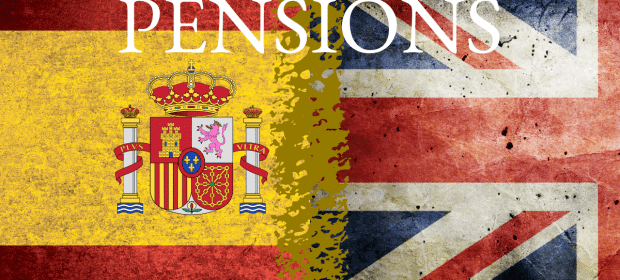
If you have moved from one country to another, while it may be comparatively easy to obtain tax advice in order to help you plan your finances, it can be very difficult to find out how your State Retirement Pension will be affected, and this has become more uncertain as a result of Brexit. This article aims to shed some light on the issue
This article aims to shed some light on the issue.
I retired in the UK and moved abroad
Let’s start with something easy – if you have already retired and moved to Spain, France or another EU country, the chances are your only State Pension will be from the UK. With Brexit in mind, as long as you were legally resident in your new home country by the end of 2020, nothing will change, and you will be entitled to the annual pension uplift indefinitely.
Coupled to this is your entitlement to healthcare, in that you will have a form S1 from the UK, which ensures you benefit from full care on an ongoing basis, and which in effect will be paid for by the UK Government.
If you have already left the UK but have not yet reached formal retirement age, as long as you were ‘legal’ in your adopted home before the end of 2020, you will receive the UK State Pension at retirement age and qualify for annual increases. You will also be entitled to a form S1.
Note that, if you have not regularised your situation in your adopted home by the end of 2020, the situation is uncertain, to say the least. You will be entitled to claim the UK State Pension when you reach retirement age, but the uplifts are only due for 3 years and, most importantly, form S1 will not be available.
I left the UK 5 years ago at the age of 55 and have been self-employed in Spain for the last 5 years
Have you been making voluntary contributions to the UK scheme? Are you making contributions in Spain? If you haven’t already done so, obtain a pension forecast from HMRC – use the gov.uk website, sign up for the Government Gateway access service, and check your National Insurance Contribution records, as well as your UK tax records. You’ll have to apply to contribute, using form CF83 attached to the booklet NI38, Social Security Abroad.
You will then be told what pension you can expect at your retirement age, and you can also see how many incomplete contribution years you have. It is generally good advice to continue to make voluntary contributions after leaving the UK (currently £795.60pa), but if you are currently self-employed, you will only have to pay at the Class 2 rate, which is £158.60pa for the current year.
You’ll receive details of how to make up the shortfall, by bank transfer or cheque for past years, and by direct debit for the future if you wish to see payments taken automatically. Importantly, you can also call to obtain advice concerning whether it would be worthwhile doing this, and how additional payments will increase your pension entitlement – it might take a while to get through, especially due to the current Coronavirus lockdown, as it appears they are only dealing with those on the point of retiring, but you should find the staff helpful when you do.
Also, make sure you understand what your Spanish contributions entitle you to and try to obtain a projection of your future pension in Spain. This might prove difficult at present, with offices closed or providing limited services.
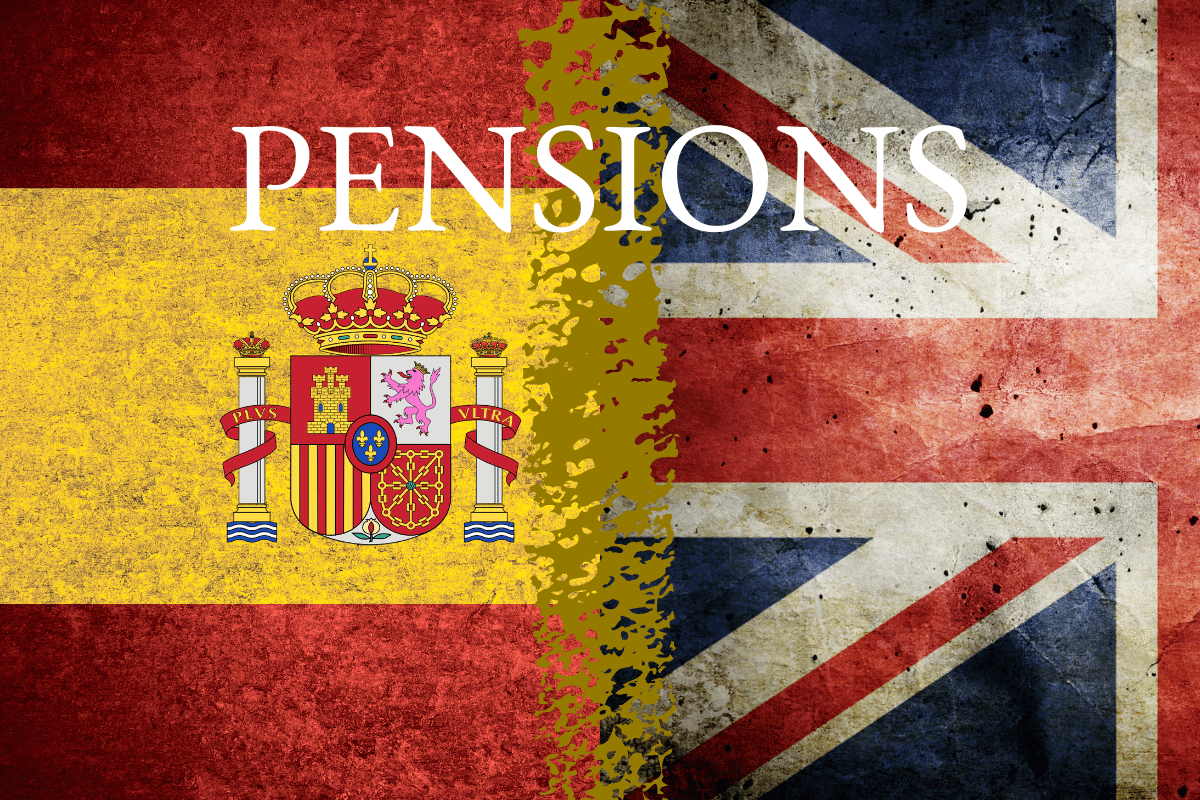
Having worked in the UK, Italy and now in Spain, I want to claim my State Pension
The first thing to understand is that you should retire formally in the country you are currently living in, unless you haven’t made any pension
contributions there – in which case you apply to the last country in which you contributed.
So, in this case, you approach the Spanish authorities and will have to provide details of all your employment and self-employment history. Spain will then check with each country concerned (the EU-wide scheme ensures this is possible – work history outside the EU means you may have to apply individually to those countries) and will calculate your entitlement. (But bear in mind that Brexit may have had an impact on this in practice, even though the scheme should not be affected – very much ‘work in progress’).
They will do this by adding together the contribution years of each country and then applying this to their own pension rules. This means that, even if you don’t have the minimum number of years’ contributions in one country, the chances are that the contribution years in other countries will ensure you get a pro rata pension. Don’t forget, official retirement age can vary in different countries, and some state pensions are more generous than others.
Each country will then pay their share directly to you, and if you have continued paying into the UK system it’s likely you’ll end up with a much higher pension than might otherwise have been the case.
How is healthcare affected? Any other issues?
The good news is that receiving your pension locally will mean that your access to the local healthcare system comes with it – no need for a form S1. So, any attempts by the UK to remove themselves from the S1 scheme will not affect you.
Note that, although the UK state pension is paid regardless of your other income, the state pension in Spain is not, in that if you wish to continue to work, Spain will not pay anything to you.
Other financial planning tips?
Despite the UK government’s attempts to water down the ability to ‘export’ your UK private pensions using the QROPS arrangements, this is still possible – but perhaps won’t be for much longer. So, obtain advice about whether such a move would be beneficial, as soon as possible.
Any savings or capital you have should be invested tax-efficiently and with the aim of protecting it against both inflation and exchange rate fluctuations. Stock markets can fluctuate too, sometimes dramatically as we have seen, so be careful you understand the amount of risk your investments are exposed to, and seek help from a suitably qualified professional who will be able to help you over the long term.
How much do I need for a comfortable retirement?
By Chris Webb
This article is published on: 18th March 2020
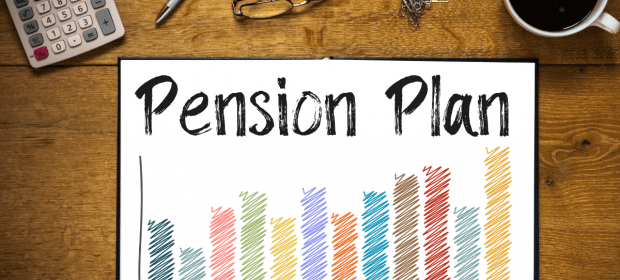
How much money will I need in retirement?
This is one of the most common questions I hear as a Financial Adviser in Madrid, Spain.
The answer to that question differs from person to person and the numbers I discuss with my clients vary massively. To some, having a quiet retirement with little requirements is the goal; others will want to continue playing golf and attend social events weekly. There is a huge difference in what you will need in your pocket with these different scenarios.
So, what do the experts think?
Researchers have calculated how much money a person needs per year in order to enjoy a comfortable retirement. The numbers were calculated by Loughborough’s Centre for Research in Social Policy (CRSP), The Pensions & Lifetime Savings Association (PLSA) and Retirement Living Standards (RLS). A report from Loughborough University and the Pensions and Lifetime Savings Association aims to help people understand how much they will need for a minimum, moderate or comfortable quality of life once they retire.
In the UK a full state pension comes in at just over £8,500, but it’s the other savings you accrue over your working life that will make the difference in people’s post-work years.
Experts found that a single person will need about £10,200 a year to achieve the minimum living standard, £20,200 a year for moderate living standards and £33,000 a year for comfortable living standards. For couples, the minimum standard came in at £15,700, moderate was £29,100 and comfortable worked out as £47,500. The results are based on consultations with members of the public and consider what is needed in retirement for home DIY and maintenance, household and personal goods, holidays, food, transport, clothing and social engagements.
The new Retirement Living Standards describe three different standards of living with associated costs for each – all established by what the public considers realistic and relevant expectations. Associated costs are made up of household bills, food and drink, transport, holidays and leisure, clothing and personal and helping others. The standards cover a range of goods and services that are relevant to most people. These and other costs, such as tax on pension income, may need to be added depending on individual circumstances.
A series of profiles and infographics have been created on the PLSA website to help people calculate their own finances. The research for the Retirement Living Standards was adapted from the approach used to produce the Minimum Income Standard – a calculation of what the public thinks is an acceptable minimum standard of living. The data was gathered through 26 group discussions with around 250 members of the public already retired or approaching retirement, from a wide range of backgrounds. Expert views were taken into account for some areas, such as transport, energy usage and food costs.
The discussions set the parameters for how higher living standards should be described and defined. Through these discussions, three retirement living standards were agreed: minimum, moderate and comfortable.
The standards:
At a cost of £10,200 per year for a single person and £15,700 for a couple, the minimum lifestyle covers all your needs plus enough for some fun – including social participation and social occasions.
The moderate lifestyle (£20,200 a year for singles and £29,100 for couples) provides, in addition to the minimum lifestyle, more financial security and more flexibility.
At the comfortable level (£33,000 a year for singles and £47,500 for couples), retirees could enjoy some luxuries like regular beauty treatments, theatre trips and three weeks in Europe a year.
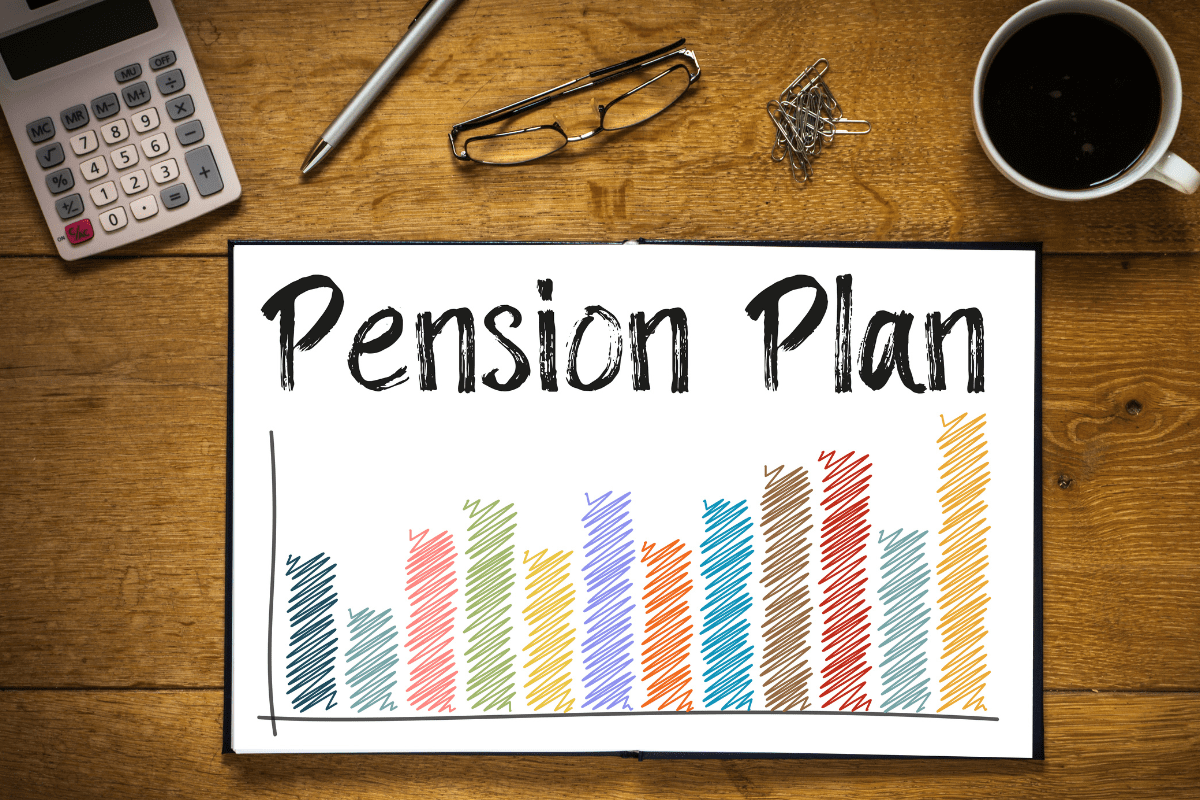
*Table from https://www.retirementlivingstandards.org.uk/
Breaking down the RLS:
House: Household utility bills, decorating and maintenance, furniture, cleaning supplies, lightbulbs, cooking utensils, appliances (e.g. fridge, washing machine), garden supplies, towels, bedding, gardener/cleaner/window cleaner & funeral plan.
Food and Drink: Household food shopping, eating out, beer & wine.
Transport: Car running costs, railcard/train travel & taxis.
Holidays and Leisure: TV, DVD player, laptop, printer, speakers, CDs, stationery supplies, TV license and subscriptions, internet, activities & holidays.
Clothing and Personal: Clothing, footwear, cosmetics, toothbrush, toothpaste, shaving supplies, hair styling, beauty treatments, dentist, opticians, podiatry & minor first aid supplies.
Helping Others: Gifts, helping others (if applicable) & charitable donations
Planning early is key to getting your retirement plans in order. You can look up another of my articles here on this subject titled “It Is Never Too Early”
Don’t delay your financial plans. For planning, yesterday is better than today, which is better than tomorrow. Contact me, Chris webb on 639 118 185 or chris.webb@spectrum-ifa.com if you want to discuss your own circumstances.
Sources:
Loughborough’s Centre for Research in Social Policy (CRSP).
Pensions and Lifetime Savings Association (PLSA)
Retirement Living Standards (RLS)


